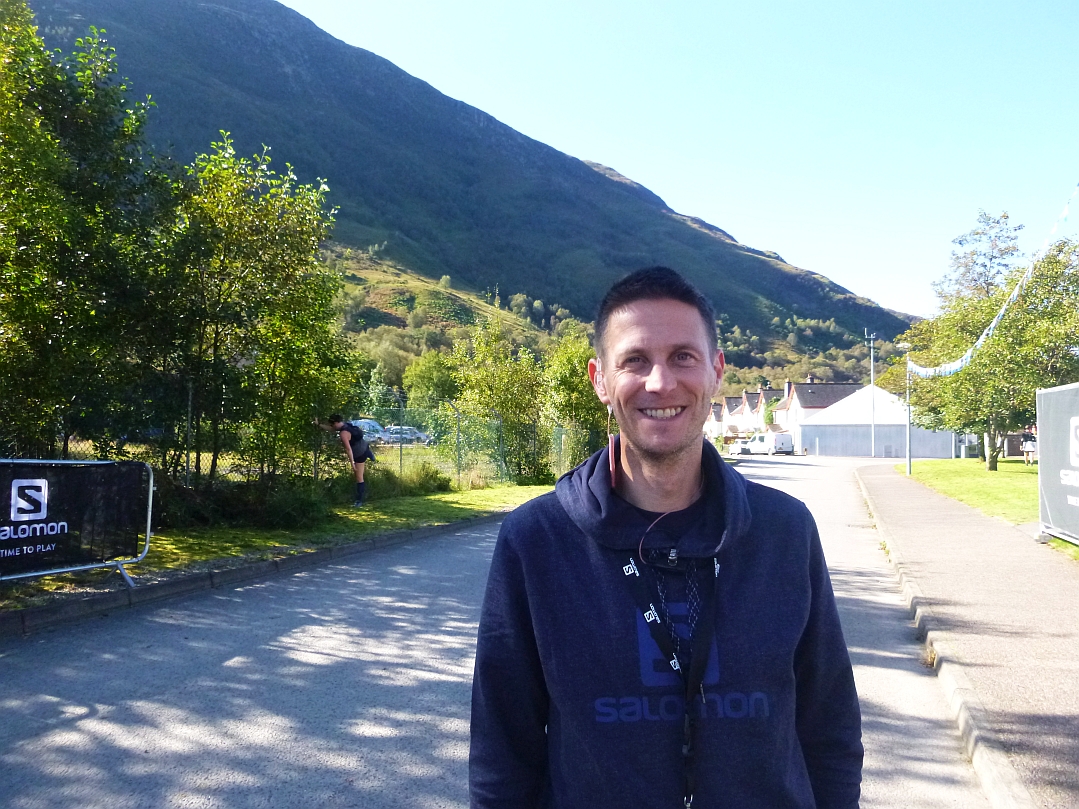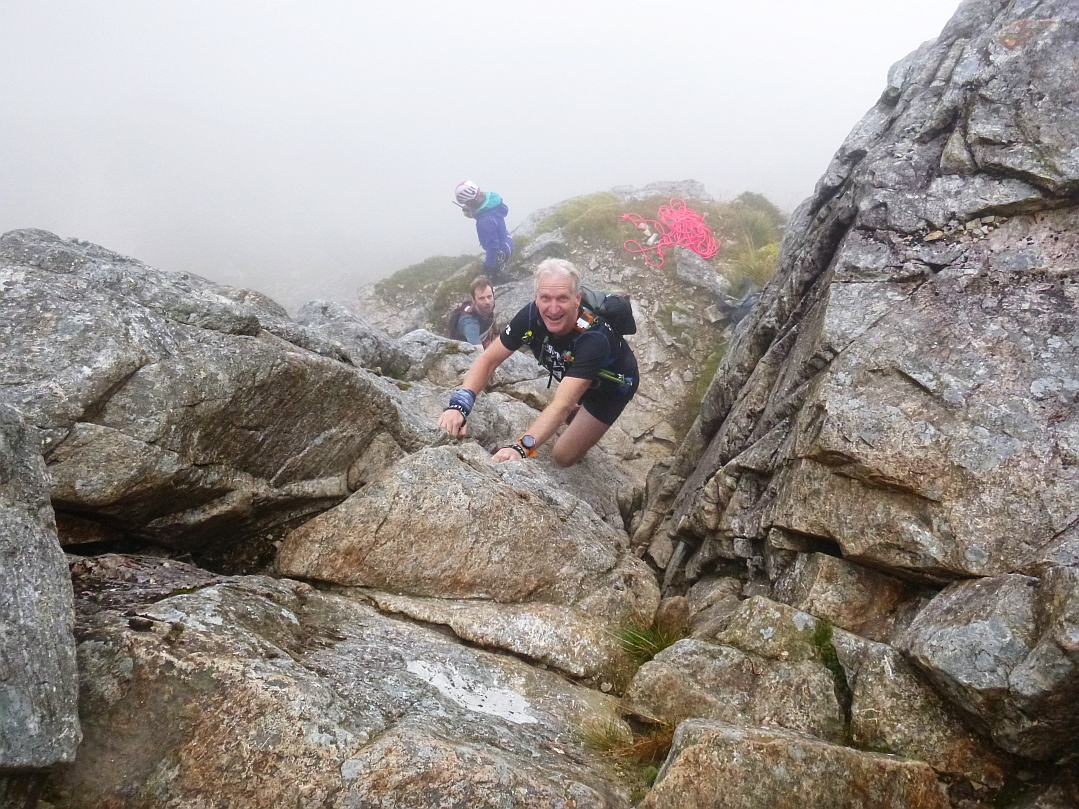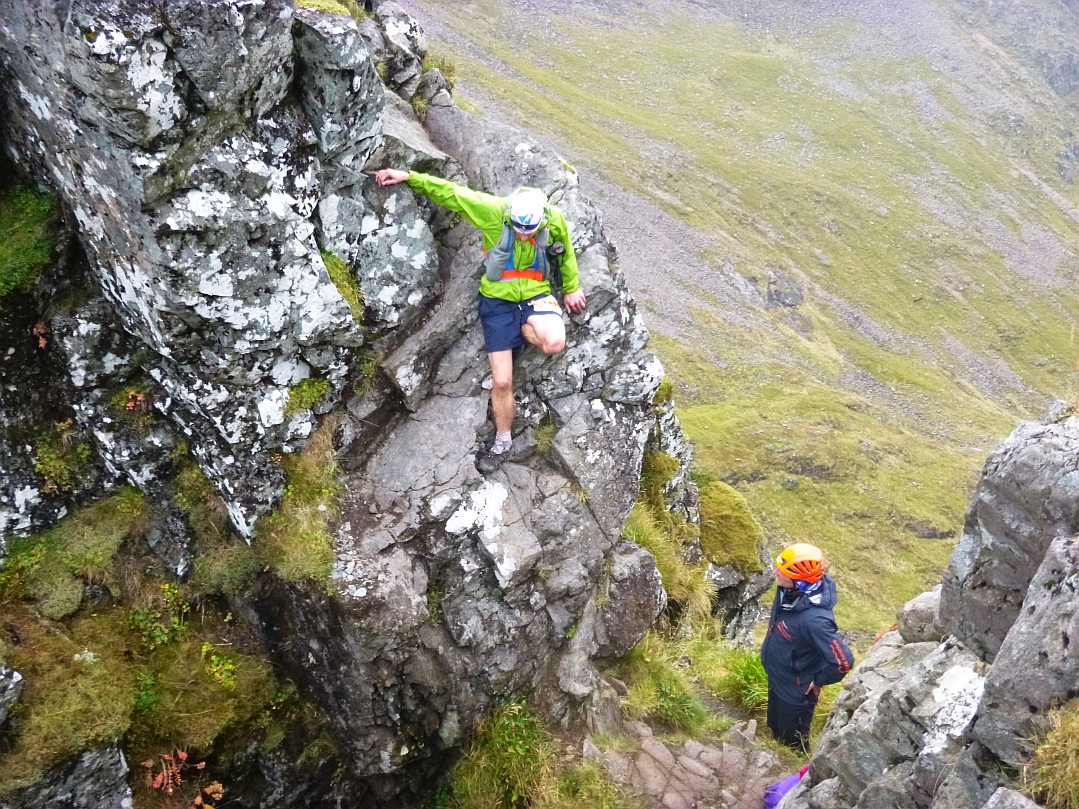Kinlochleven, 20 September 2019, early afternoon. The winners of Ben Nevis Ultra are just about to arrive at the finish line and the participants of Mamores VK are setting off from the starting pen. We have a pleasure to interview Shane Ohly, the race director of Salomon Skyline Scotland mountain running festival and owner of Ourea Events, and also an elite climber and mountain runner.

Glen Coe Skyline was the first one of your races and still is the flagship race of the festival, although Ben Nevis Ultra and especially Ring of Steall now attract higher numbers of runners. Shane, was the Skyline entirely your idea?
Shane Ohly: - It's an inspiration of many people's ideas. It would be unfair to claim it as 100 per cent mine, I just pulled it all together. I guess it was my idea to incorporate the most technical bits like Curved Ridge and Aonach Eagach.
So here comes your sports background... Do you consider yourself more of a runner or a climber?
I was a professional climber when I was a teenager and in my early twenties. So yes, first I'm a climber, and then a runner later on.
Let's go back in history of extreme skyrunning. Trofeo Kima was first and what was next?
Kima is the oldest of those most extreme races, dating back to 1995. Hamperokken Skyrace at Tromsø started a year before our race, in 2014, but we had already started the process of creating Glen Coe Skyline then. We didn't see Tromsø when we decided to launch our own race. It was interesting that both races came within less than a year from each other.
What kind of crowd do you expect at your most extreme race?
We vet the entries. Anyone who doesn't meet our criteria we turn down and we're most strict about that. Participants of the race should be experienced. We would expect them to be competent in the mountains, have the experience in running and climbing. They should be solid outdoor, mountain people.
Has the vetting process proved to be working so far?
Pretty much yes. We turn down between 30 and 40 per cent of all those who ask for entry, so unfortunately a lot of people get disappointed. Sometimes we would turn down someone who probably would be fine doing the race but their application is poor. What we don't do is coach someone through the application process. It's very clear what we ask for, we have clear criteria to match up against, you just answer yes/no questions. Every year we would upset one or two people but I'd rather do that than give an entry to someone who shouldn't get it, for safety reasons.
Adventure is important to me, and I think in adventure you need uncertainty of the outcome. When you add some risk to that, you have an amazing race. It's genuine, it's real. If someone was to slip on Curved Ridge or Aonach Eagach, it's very likely they would hurt themselves or somebody else. That's why the vetting is so strict. If one person falls and they just hurt themselves, that's bad. But if somebody slips and hurts other people, that's really bad! So that's why we have to be strict.

Have there been any major accidents in the history of Glen Coe Skyline?
No (grin). But I have to be realistic, one day there can be an accident. It's happened at Tromsø and Kima. If you put enough people into that terrain, eventually there will be an accident. And as a race organiser I want to be certain that I've done the very best job to minimise the danger without taking away the adventure and the risk that's inherent to the activity.
What's your opinion on fixed ropes in some races in scrambling terrain?
I think every race has to decide what's right for them. In the UK there is very little fixed equipment in the mountains, very different to the Alps. And from the word go, we wanted to have no fixed equipment on the race route, even temporary. That's our philosophy, we make it clear and the participants need to understand that.
Lakes Sky Ultra and Pinnacle Ridge Extreme do it in the UK, and so does Tromsø, don't they?
Yes, that's their decision and it's fine. I've done Tromsø and I know that it's an extreme race as well. But personally I like challenges that are very pure, in natural mountain environment and I don't want to make that easier for people. They have to measure themselves to that standard. We don't want to reduce standard for the runners.
Have you heard of the Els 2900 challenge in Andorra? They went one step further at some point and just gave up on any waymarking. What do you think of it?
I know that race and would like to do it one day. I have friends who have done it and it's amazing. But it's a different type of race. One of the principles in skyracing is that the course is waymarked. We organise many races in the UK and some of them are navigational ones and that's a different challenge. We're not trying to create a navigational challenge here. The good thing about waymarking is that it makes the course fair and even for international runners.
At the beginning of Glen Coe Skyline, was there any criticism from people who didn't believe that everything would go well?
Yeah... when we launched Glen Coe Skyline, in the first week or two when the event was made public, we were almost in every newspaper in the UK with a story of Glen Coe Death Race! (laugh) That was the story they ran. We took a lot of criticism in that period about the race, and still there are people who think the race is dangerous. But I think it's important that an experienced adult can make a choice about the level of adventure and risk they are prepared to accept. And there is a small number of people out there who relish the opportunity to race in the mountains in the way we offer. It's a highly positive, life-affirming experience for them, and I think it's important that people have this opportunity.
How do you see the future of extreme skyrunning? Do you think anything even more difficult can show up on the world map of skyrunning?
You can always make something harder. We can make a race harder in Scotland as well. But you have to balance it as being commercially viable. Glen Coe Skyline is not really a commercial race. The numbers are too small and the logistics too complex and costly to put a race on. We do it because we love it and we support it by Ring of Steall and other races during the Skyline Scotland weekend. I think the big challenge if you want to make a race more technical is making it commercially viable.

So do you think something even harder would have to be a completely niche event for the few chosen ones?
Exactly, we could do a race for 20 elite runners on some amazing terrain, but who's gonna pay the bill? Red Bull would! (laugh) We don't want to make a gimmick. Glen Coe Skyline has become famous because many people can go woooow! one day I would like to do that.
Which one do you think is the hardest of the three: Kima, Tromsø or Glen Coe?
I've done all three. (grin) They all give different challenges. In terms of technical terrain Glen Coe is definitely the hardest. There's no doubt about that whatsoever. But none of them are easy races. Yeah, they are tough.
Salomon Glen Coe Skyline festival comprises the following races: Ben Nevis Ultra (52 km, 4000 m+), Mamores Vertical Kilometre (5 km, 1000 m+), Ring of Steall (29 km, 2500 m+) and Glen Coe Skyline (52 km, 4750 m+), and since 2019 three new trail races: Three Mealls (18 km), Loch Eilde Mòr (10 km) and Grey Mare's (5 km).
Website: http://www.skylinescotland.com/
Kamil Weiberg
